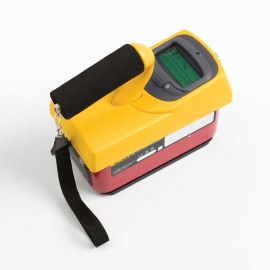Nuclear radiation is a normal part of our planet and the cosmos. It is also a by-product of man-made actions and activities. The unfortunate catastrophe in Japan has created a new sense of urgency for personal radiation measurement to an entirely new generation of post-Cold War individuals. Radiation is all around us. The sun radiates energy, radio stations radiate electromagnetic waves and radiators in apartment buildings radiate heat to keep residents warm in cold weather. However, nuclear radiation is a different type of radiation known as ionizing radiation. Use a Radiation Detector For: 1. Check granite countertops, water filters, air filters, building materials and other items in your home for radioactive contamination 2. Check for radioactivity in antiques, watch and clock dials, antique pottery, smoke detector, lantern mantels, etc. 3. Monitor and maintain awareness amidst a nuclear accident or emergency 4. Test for radioactive contamination of food 5. Check for radioactivity in metal objects in your home or office that could be made of recycled radioactive materials 6. Check for leaks or possible exposure if you work in or near an X-ray lab in a medical facility or medical office suite 7. Check for environmental levels of radioactivity near a nuclear power facility 8. Test the soil and environment for dangerous levels of radioactivity, if are in close proximity to uranium mines 9. Monitor personal levels of radiation due to radiation therapy, brachytherapy or other medical procedures that rely on radioactive substances Examples of what Geiger counters do not detect: 1. Neutron radiation 2. Microwave radiation 3. Cell phone and smart meter radio frequency (RF) electro-magnetic field (EMF) radiation 4. Radon gas (Test kits available in home improvement stores) 5. Laser energy
Radiation Terms:
ALPHA:
Positively charged particles emitted from the nucleus of an atom. Alpha particles are relatively large, and very heavy. Due to this strong (+) charge and large mass, an alpha particle cannot penetrate far into any material. A sheet of paper or an inch of air can usually stop most alpha particles.
BACKGROUND RADIATION:
Naturally occurring radiation is always present, it includes high energy gamma rays from the sun and outer space and alpha, beta, and gamma radiation emitted from elements in the earth.
BETA PARTICLES:
Negatively charged particles emitted from an atom. Beta particles have a mass and charge equal to that of an electron. They are very light particles (about 2,000 times less mass than a proton) and have a charge of -1. Because of their light mass and single charge, beta particles can penetrate more deeply than alpha particles. A few
millimeters of aluminum will stop most beta particles.
Bq (Becquerels):
A quantity of radioactivity in which one atom is transformed per second. 1 dps (one disintegration per second).
CPM (counts per minute):
The unit of measurement usually used to measure alpha and beta radiation.
GAMMA RAYS:
Short wavelength electromagnetic radiation higher in frequency and energy than visible and ultraviolet light. Gamma rays are emitted from the nucleus of an atom. These high energy photons are much more penetrating than alpha and beta particles.
ION:
An atomic particle, atom, or molecule that has acquired an electrical charge, either positive or negative, by gaining or losing electrons.
IONIZATION:
The process by which neutral atoms of molecules are divided into pairs of oppositely charged particles known as ions.
IONIZING RADIATION:
Radiation capable of producing ionization by breaking up atoms or molecules into charged particles called ions.
RADIATION:
The emission and propagation of energy through space or through matter in the form of particles or waves.
ROENTGEN (rent-gen):
A basic unit of measurement of the ionization produced in air by gamma or x-rays. One Roentgen (R) is exposure to gamma or x-rays that will produce one electrostatic unit of charge in one cubic centimeter of dry air. One thousand milliroentgen (1,000 mR)= 1R.
RADIOISOTOPE:
A natural occurring or artificially produced radioactive form of an element.
SIEVERT:
A unit of dose equivalent. 1 Sv= 100 roentgens, 10μSv/hr = 1 milliroentgen/hr. (μSv micro-Sievert, micro is one millionth, milli is one thousandth.)
X-RAYS:
Electromagnetic radiation (photons) of higher frequency and energy than visible and ultraviolet light, usually produced by bombarding a metallic target with high speed electrons in a vacuum. X-rays are photons emitted by interactions involving orbital electrons rather than atomic nuclei. X-rays and gamma rays have the same basic
characteristics. The only difference between them is their source of origin.


